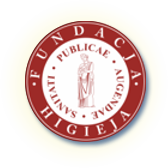Medycyna Doświadczalna i Mikrobiologia 2015, 67(2): 97-106
Analiza wyników badań laboratoryjnych w kierunku zakażeń wywołanych przez pałeczki Salmonella w latach 2008-2014 w Polsce
[Analysis of laboratory tests results for Salmonella infections performed since 2008 to 2014 in Poland]
Streszczenie.
W latach 2008 – 2014 gromadzono wyniki badań laboratoryjnych w kierunku zakażeń pałeczkami Salmonella/Shigella (SS), wykonywanych w laboratoriach Państwowej Inspekcji Sanitarnej w Polsce. Zaobserwowano systematyczny spadek liczby wykonywanych badań SS oraz spadek liczby dodatnich wyników. Najczęściej występującym typem serologicznym pałeczek Salmonella była S. Enteritidis, następnie S. Typhimurium. Najczęściej badanym materiałem w kierunku SS był kał, w dalszej kolejności wymaz z odbytu.
Abstract.
Introduction: Next to official surveillance system in Poland, established by Public Statistic Act in 1995, other surveillance data collection system exists – historically connected with Ministry of Health Decree, which is not in force from 1995 y. Data in this system comes from National Sanitary Inspection laboratories and contains results of clinical samples examinations for Salmonella and Shigella presence.Material and methods: Analysed data were collected since 2007 to 2014 y. Database has been created, which contains data - results of Salmonella / Shigella (SS) detection in faecal samples, rectal swabs, urine samples, blood samples collected from patients, people exposed in outbreaks, Salmonella carriers, food workers and other people.Results: The number of performed tests for SS in 2014 is 447033. Systematic decrease of this number has been observed since 2008. Most common material tested for SS was stool samples, then rectal swabs. Number of Salmonella identification going down each year during analysed time. The highest decrease in group of sick people has been observed. Most common serotype in 2008-2014 years was S. Enteritidis, then S. Typhimurium. Only in 2010 y. second most common serotype was S. Mbandaka. In 2014 y. highest number of S. enterica 1,4,[5],12:i:- has been observed (37 cases). Conclusions: The reason of decreased number of performed SS test and positive Salmonella results is unclear. One of theories is decreased level of quality of SS diagnostic. From the other hand, decreased number of false-positive Salmonella identification outside of National Sanitary Inspection laboratories is observed. This demonstrates improving quality of Salmonella diagnostic in laboratories performing such tests. High disproportion between number of Salmonella cases in described database and official notification system is observed. It comes from, that both systems collect different data. Both systems could exist independently and could supplement each-other.
Liczba pobrań: 2675




